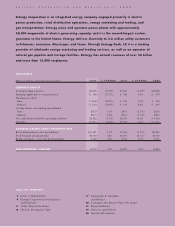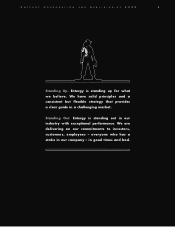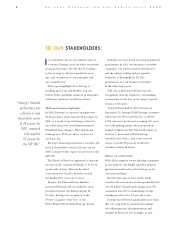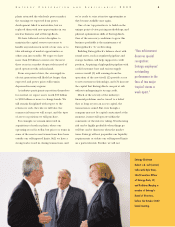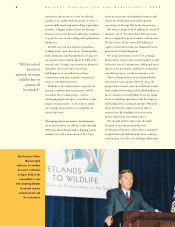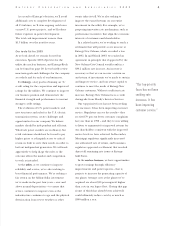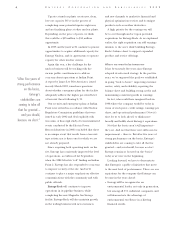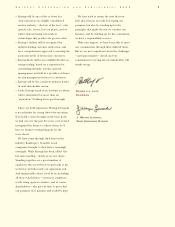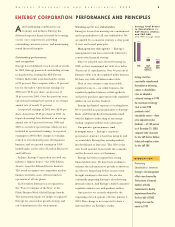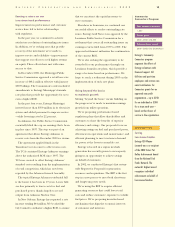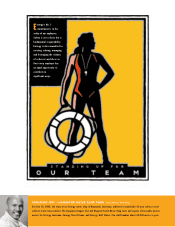Entergy 2002 Annual Report Download - page 6
Download and view the complete annual report
Please find page 6 of the 2002 Entergy annual report below. You can navigate through the pages in the report by either clicking on the pages listed below, or by using the keyword search tool below to find specific information within the annual report.
ENTERGY CORPORATION AND SUBSIDIARIES 2002
4
warehouse risk in excess of our overall risk
profile or in conflict with our point of view or
proven skills in pricing and trading a particular
product. A bigger balance sheet for Entergy-
Koch is a necessary, but not sufficient, condition
to grow the size of our trading and optimization
businesses.
In 2002, we reviewed dozens of pipelines,
trading books, and other assets. Working with
Koch Industries and Entergy-Koch, we placed
six separate bids totaling almost $5 billion. In
several cases, “losing” was a matter of financial
discipline: We stayed out of irrational
bidding wars, or we walked away from
transactions with unacceptable commercial
terms or encumbered assets.
With the scale of divestitures expected, we
remain confident that our patience will be
rewarded. We’re taking steps – such as
developing legal structures to facilitate a wide
range of transactions – to be ready to utilize
our strong cash position to accomplish our
stated objectives.
Changing course on power development
As we noted above, we did not come through
2002 unscathed. Faced with collapsing power
markets, we took a write-down of $1.17 per
share in our power development business and
closed the North American development
operations of Entergy Wholesale Operations.
We took a charge of $141 million to cancel 15
turbines, out of 36 ordered in 1999, that were
not yet assigned to projects under construction.
We also wrote off the entire $55 million of
equity we had invested in our Damhead Creek
plant in the United Kingdom.
We took write-downs on two U.S. peaking
plants whose value in the current market is well
below the cost of construction. Additional write-
offs were for previously capitalized overhead in
cancelled projects, as well as severance costs.
Most of Damhead Creek was financed with
true non-recourse project debt. To keep the
project debt current, and out of default, would
have required investing another $100 million or
more – money we would likely never see again.
So we reached an agreement with the banks to
sell the plant for a nominal amount. When the
deal closed in December, we were able to
remove over $450 million of non-recourse
project debt from our balance sheet.
We strongly believe that it was the right
decision to exit the greenfield power
development business, while others continued
to speed forward. But obviously if we could go
back in time, we’d do a lot of things differently.
Chief Executive Officer
Wayne Leonard
addresses the Southern
Governors’ Conference
in August 2002 on the
responsibility to deal
with competing demands
of national security,
economic growth, and
the environment.
“With the scale of
divestitures
expected, we remain
confident that our
patience will
be rewarded.”


